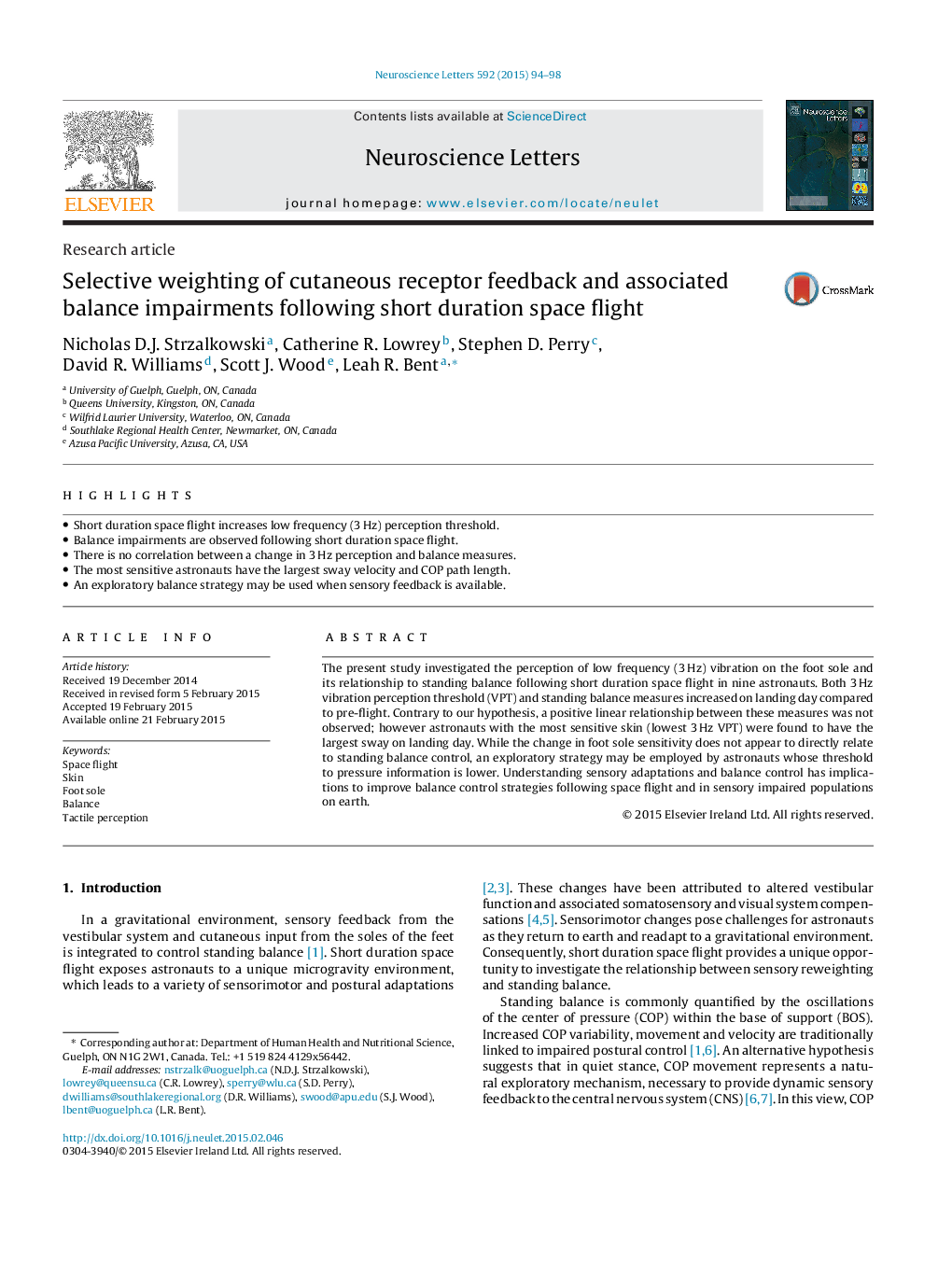| Article ID | Journal | Published Year | Pages | File Type |
|---|---|---|---|---|
| 4343491 | Neuroscience Letters | 2015 | 5 Pages |
•Short duration space flight increases low frequency (3 Hz) perception threshold.•Balance impairments are observed following short duration space flight.•There is no correlation between a change in 3 Hz perception and balance measures.•The most sensitive astronauts have the largest sway velocity and COP path length.•An exploratory balance strategy may be used when sensory feedback is available.
The present study investigated the perception of low frequency (3 Hz) vibration on the foot sole and its relationship to standing balance following short duration space flight in nine astronauts. Both 3 Hz vibration perception threshold (VPT) and standing balance measures increased on landing day compared to pre-flight. Contrary to our hypothesis, a positive linear relationship between these measures was not observed; however astronauts with the most sensitive skin (lowest 3 Hz VPT) were found to have the largest sway on landing day. While the change in foot sole sensitivity does not appear to directly relate to standing balance control, an exploratory strategy may be employed by astronauts whose threshold to pressure information is lower. Understanding sensory adaptations and balance control has implications to improve balance control strategies following space flight and in sensory impaired populations on earth.
